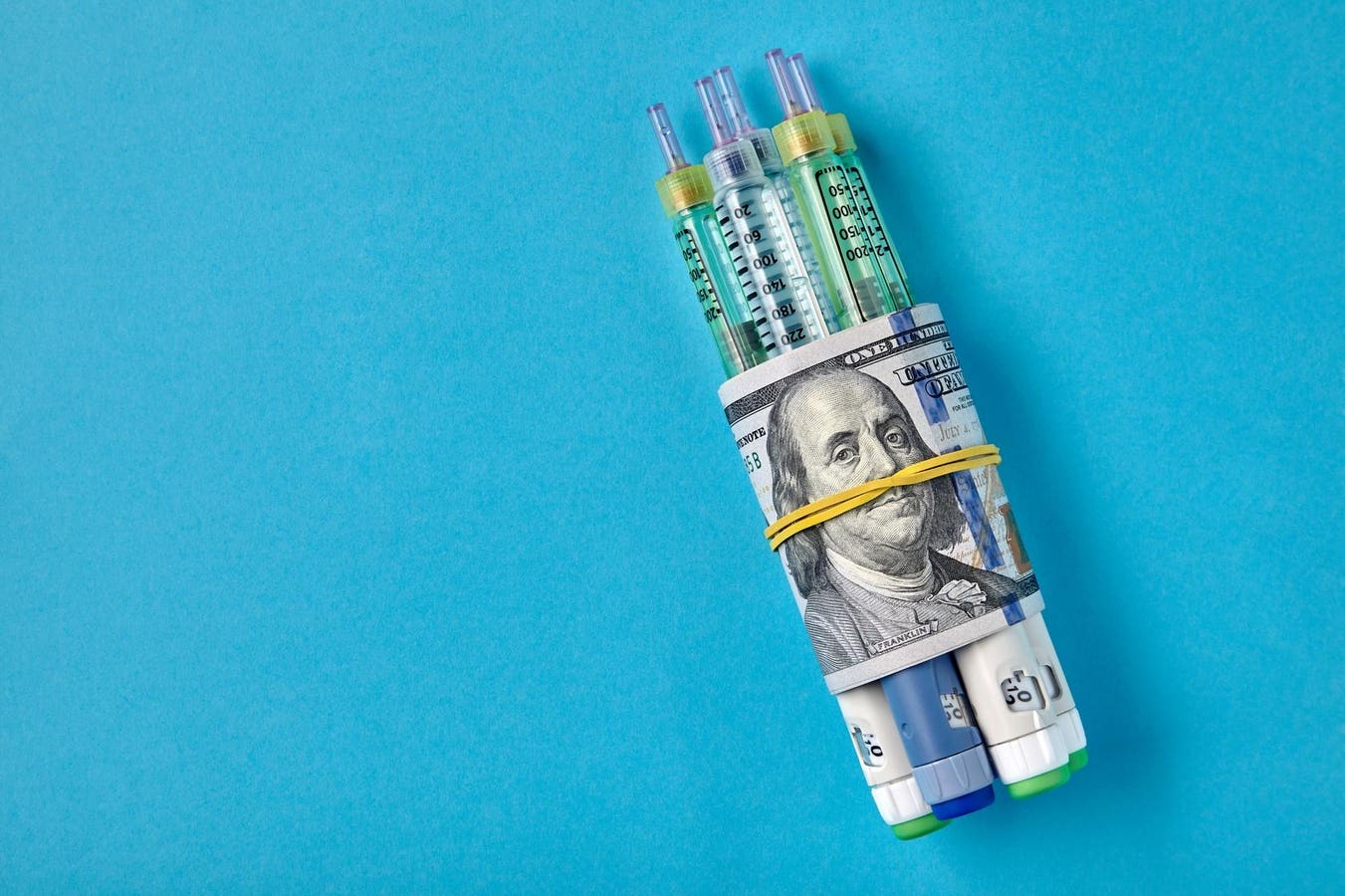In describing the financial burden caused by the high price of insulin products, a Fortune article summarized the problem: “In a drug-pricing system driven by perverse incentives and greed, everyone wins but patients suffering from America’s most expensive chronic disease [diabetes].”
The piece was written in 2021. Since then there has been substantive relief for diabetic patients, as a combination of federal government and drug company policies has lowered out-of-pocket costs. But for some patients, insulin affordability and even availability remain critical issues.
Prior to this year, drug makers increased insulin list prices for more than two decades. This raised out-of-pocket costs for diabetic patients; for the uninsured who pay the full retail list price, the increase has been dramatic; for the insured who pay a percentage of the list price, it was a steadily rising financial burden.
At the same time, payers—usually through intermediaries named pharmacy benefit managers—have negotiated escalating rebates which lowered the net price of insulin. This meant that the difference between the gross and net price for insulin products expanded considerably over time. But the rebates were not passed on to the patient at the pharmacy counter. What ensued was growing public discontent among the more than seven million U.S. patients who rely on insulin.
Last year, Novo Nordisk announced plans to reduce the list prices of several of its insulin products beginning January 1, 2024, including the long-acting basal insulin Levemir. The company reduced its price by 65%. Sanofi also slashed the price of its long-acting competitor, Lantus. What’s more, Novo Nordisk and Eli Lilly, respectively, substantially decreased the prices of rapid-acting NovoLog and Humalog.
The price cuts occurred for several reasons, including increased competition in the insulin market, among branded products and as a result of the emergence of biosimilars which have active properties similar to previously licensed originator biologics to which they’re referenced. In addition, there was an important policy change with respect to how Medicaid-specific rebates are calculated starting in 2024.
Medicaid has a new rebate rule for prescription drugs which underwent significant list price increases in the past. Until this year, Medicaid rebates—which drug manufacturers owe the government—were capped at the total price of a drug. But due to a provision in the 2021 American Rescue Plan Act, the ceiling has been eliminated. Drug manufacturers must also pay Medicaid special rebates if they previously raised the price of their medications above the inflation index.
This implies that drug manufacturers could end up selling drugs to Medicaid at a loss. Companies can avoid this by substantially reducing the prices of their drugs, as manufacturers of insulin products have now done.
So far, this sounds like a win for patients. But Novo Nordisk has decided to discontinue manufacturing Levemir by the end of this year. STAT News reported which factors may have led to the decision. When ceasing production, companies like Novo Nordisk often blame supply chain constraints which can include challenges erected by PBMs who design formularies. These are lists of covered prescription drugs and their conditions of reimbursement, such as levels of patient cost-sharing and prior authorization protocols.
There are several other basal insulin options available to patients besides Levemir. For instance, Novo Nordisk manufactures another long-acting insulin called Tresiba. But its price has not been cut. Other products made by different manufacturers include Basaglar and Rezvoglar, as well as Lantus and its referenced biosimilar Semglee. Importantly, however, access to treatment alternatives depends on a person’s health insurance coverage. Furthermore, Levemir is the only insulin approved by the Food and Drug Administration for use during pregnancy.
Senators Jeanne Shaheen, Raphael Warnock and Elizabeth Warren criticized Novo Nordisk’s actions and in a letter demanded clarification as to whether patients would have access to affordable long-acting insulin alternatives, including Tresiba. Specifically, they asked the firm whether it plans to cut the price of Tresiba. Interestingly, the Senators’ inquiry doesn’t just address the company’s pricing behavior. It also asks about formulary placement challenges faced by Novo Nordisk and how these may have led to the discontinuation of Levemir. Additionally, the letter probes as to whether there are steps Congress could take to alleviate such issues in the future.
As part of the Inflation Reduction Act, effective January 1, 2023, out-of-pocket costs for insulin are capped at $35 per monthly prescription among Medicare beneficiaries enrolled in the outpatient or Part D program. On the campaign trail, President Biden frequently touts this as one of his Administration’s signature achievements.
Following the signing of the IRA in 2022, Novo Nordisk, Ely Lilly and Sanofi pledged to limit the price paid by patients for insulin at the pharmacy counter of insulin at $35 for those on commercial insurance.
For Medicaid beneficiaries who take insulin there are only nominal out-of-pocket charges.
President Biden has suggested expanding the $35 cap to include the commercially insured population. However, this would still leave the uninsured, whose precarious position is highlighted by ongoing Medicaid disenrollment, and the underinsured vulnerable.
The out-of-pocket costs for insulin have declined for most people in recent years, including patients with private health insurance. Nonetheless, about one-fifth of commercially insured patients pay more than $35 a month for insulin, a New York Times article reported this week. For these individuals, insulin affordability—and even availability in the case of pregnant women who will need Levemir in 2025 and beyond—continue to be urgent issues.
Read the full article here





